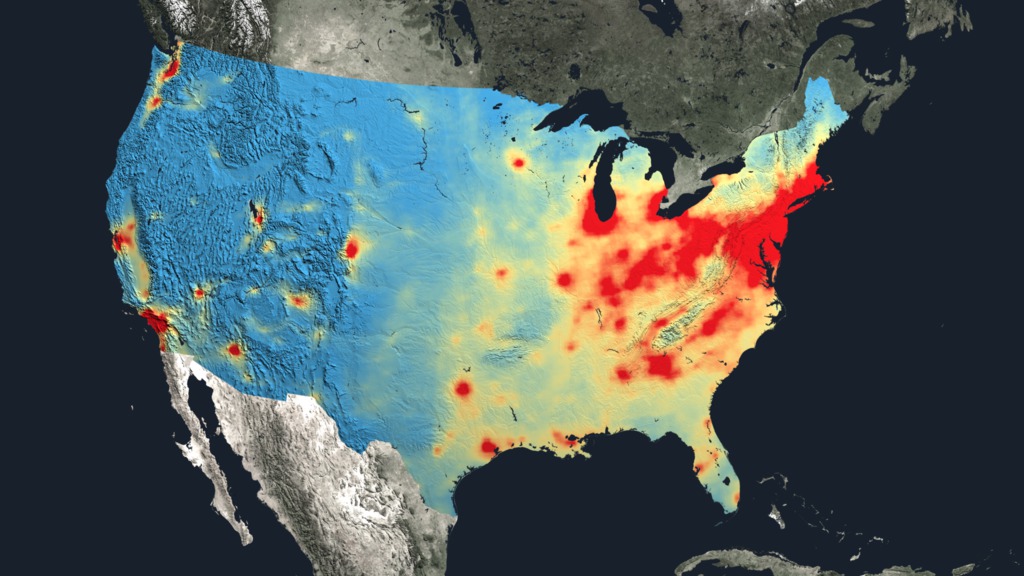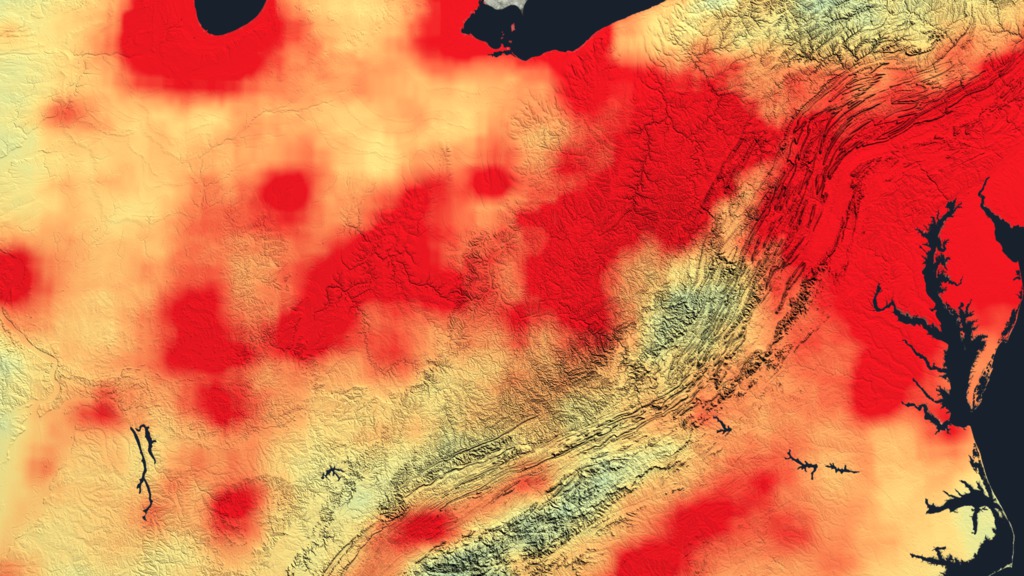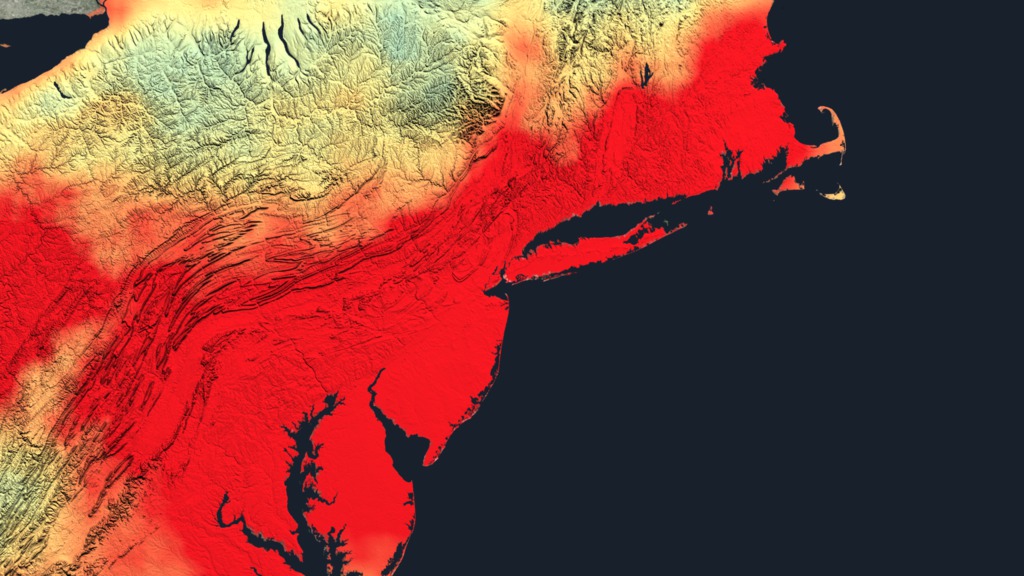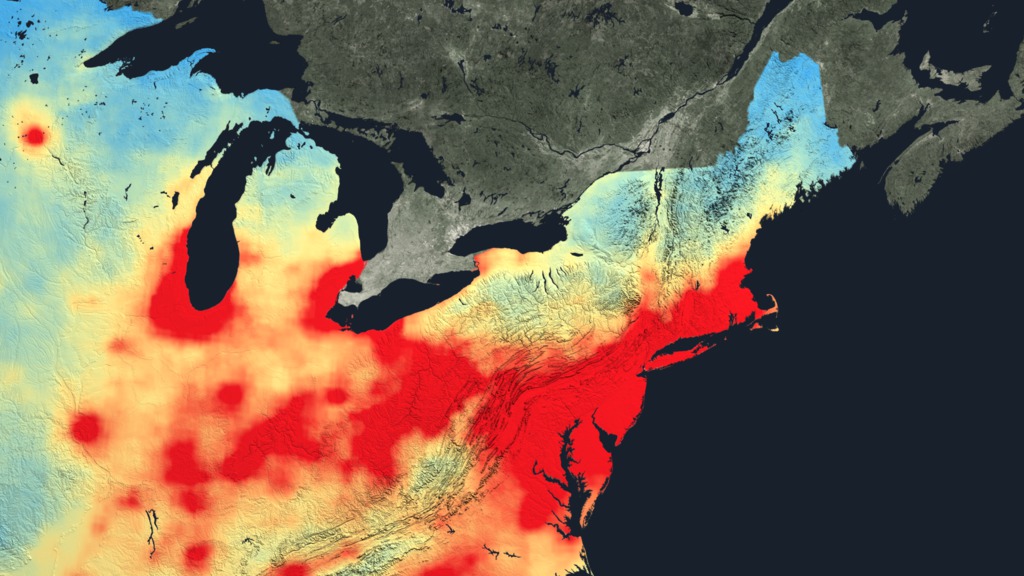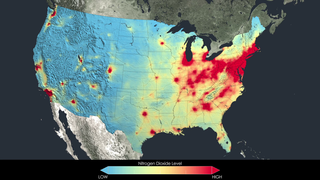Nitrogen Dioxide Reduction in U.S. Cities
Anyone living in the U.S. for the past decade may have noticed a change in the air. The change is apparent in NASA satellite images that demonstrate the country's reduction of air pollution, or more specifically, nitrogen dioxide.
Nitrogen dioxide can impact the respiratory system, and it also contributes to the formation of other pollutants including ground-level ozone and particulates. The gas is produced primarily during the combustion of gasoline in vehicle engines and coal in power plants. Air pollution has decreased even though population and the number of cars on the roads have increased. The shift is the result of regulations, technology improvements and economic changes, scientists say.
This visualization shows tropospheric column concentrations of nitrogen dioxide as detected by the Ozone Monitoring Instrument on NASA's Aura satellite. Images show how nitrogen dioxide concentrations during spring and summer months, averaged from 2005-2007, compare to the average from 2009-2011. Blue and green denote lower concentrations and orange and red areas denote higher concentrations, ranging from 1e+15 to 5e+15 molecules per square centimeter, respectively.

Atlanta: spring-summer average from 2005-2007.

Atlanta: spring-summer average from 2009-2011.

Chicago: spring-summer average from 2005-2007.

Chicago: spring-summer average from 2009-2011.

Denver: spring-summer average from 2005-2007.

Denver: spring-summer average from 2009-2011.

Houston: spring-summer average from 2005-2007.

Houston: spring-summer average from 2009-2011.

Los Angeles/San Diego: spring-summer average from 2005-2007.

Los Angeles/San Diego: spring-summer average from 2009-2011.

New York: spring-summer average from 2005-2007.

New York: spring-summer average from 2009-2011.

Philadelphia: spring-summer average from 2005-2007.

Philadelphia: spring-summer average from 2009-2011.

San Francisco Bay Area: spring-summer average from 2005-2007.

San Francisco Bay Area: spring-summer average from 2009-2011.

Tampa: annual average from 2005.

Tampa: annual average from 2011.

California: annual average from 2005.

California: annual average from 2011.

Credits
Please give credit for this item to:
NASA Goddard's Scientific Visualization Studio
-
Animator
- Trent L. Schindler (USRA)
-
Producer
- Kayvon Sharghi (USRA)
-
Scientists
- Bryan Duncan (NASA/GSFC)
- Lok Lamsal (USRA)
- Yasuko Yoshida (SSAI)
-
Project support
- Aaron E. Lepsch (ADNET Systems, Inc.)
-
Writer
- Kathryn Hansen (Wyle Information Systems)
Release date
This page was originally published on Thursday, June 26, 2014.
This page was last updated on Wednesday, May 3, 2023 at 1:50 PM EDT.
